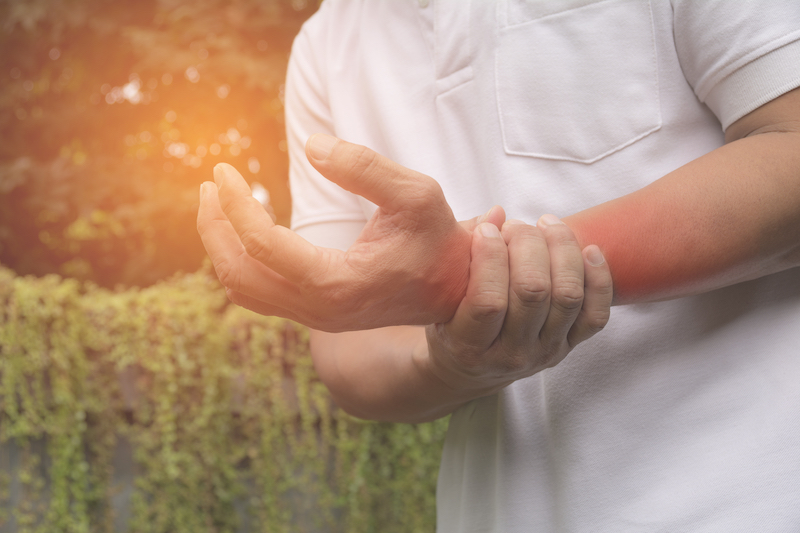A course of physical therapy can bring about relief carpal tunnel syndrome
From turning door knobs and driving cars, to picking up children and pointing out stars, we all use our wrists on a nearly constant basis. Sometimes this can lead to tingling and numbness. If you are looking for carpal tunnel syndrome treatment in Visalia, keep reading and we will share with you why seeing one of our physical therapists is a great choice.
The wrist is the converging point where the hand meets the forearm, and it consists of 15 unique bones. Often thought of as a single joint, the wrist is actually made up of three primary joints and several other smaller joints where each of these bones connects with one another. Muscles, ligaments, and tendons further reinforce these connections, and communication is accomplished through a series of nerves. But with such a complex arrangement, there are also many things that can go wrong with the wrist and lead to pain.
The 15 bones that make up the wrist are as follows:
- 5 long bones in the hand (metacarpals) that connect the fingers to the wrist
- 8 small bones in the center of the wrist, which are arranged in two rows of four
- The ends of the 2 bones of the forearm (radius and ulna), which make up the largest joints of the wrist
These bones are connected by numerous ligaments and surrounded by cartilage, which allows for movements and cushion the bones from rubbing against each other. Any of the structures of the wrist can be damaged by extreme movements—like twisting, bending, or a direct impact—that force it beyond its normal range of motion. The result of this damage may be a sprain, strain, fracture, or dislocation, all of which are most commonly seen in sports and other physical activities.
If You Have More than Pain (i.e. tingling and numbness), It Could be Carpal Tunnel Syndrome
Another frequently seen wrist condition is called carpal tunnel syndrome (CTS). The carpal tunnel is a space at the base of the palm that contains a number of tendons and the median nerve, which provides sensation to most fingers. If these tendons thicken or any other swelling occurs, this tunnel narrows, which puts pressure on the median nerve and causes CTS. The greatest risk factors for CTS are repetitive hand motions, awkward hand positions, mechanical stress on the palms, and vibration, and symptoms usually start with a burning or tingling sensation, but eventually pain, weakness and/or numbness develop in the hand and wrist, and then radiate up the arm.
Other common wrist-related issues include rheumatoid arthritis and osteoarthritis, tendinitis (inflammation of one or more tendons), De Quervain’s tenosynovitis (tendinitis on the thumb side of the wrist), Dupuytren’s contracture (abnormal thickening of tissue between skin and tendons in the palm), and ulnar tunnel syndrome (similar to CTS). All of these conditions have their own unique characteristics and arise for different reasons, but they do share one thing in common: each can be effectively treated with physical therapy.
Despite What You May Have Been Told, Surgery is NOT Your Only Treatment Option
Physical therapists are movement experts that can work with patients to identify the source of their symptoms, and from there, will design a treatment program that’s customized to each patient and based on their personal abilities and goals. This one-on-one approach to treatment has been proven to work because it identifies the patient’s impairments and targets them with a unique set of active interventions meant to reduce their symptoms. The findings of a recent study highlight the effectiveness of a physical therapy intervention for CTS called manual therapy based on neurodynamic techniques. The conclusion reads:
The use of neurodynamic techniques in conservative treatment of mild to moderate forms of CTS has significant therapeutic benefits in the short term
So if you’re dealing with symptoms that might suggest CTS or any other wrist-related problems that are getting in the way of your daily life, physical therapy may be the very solution you’re seeking.

